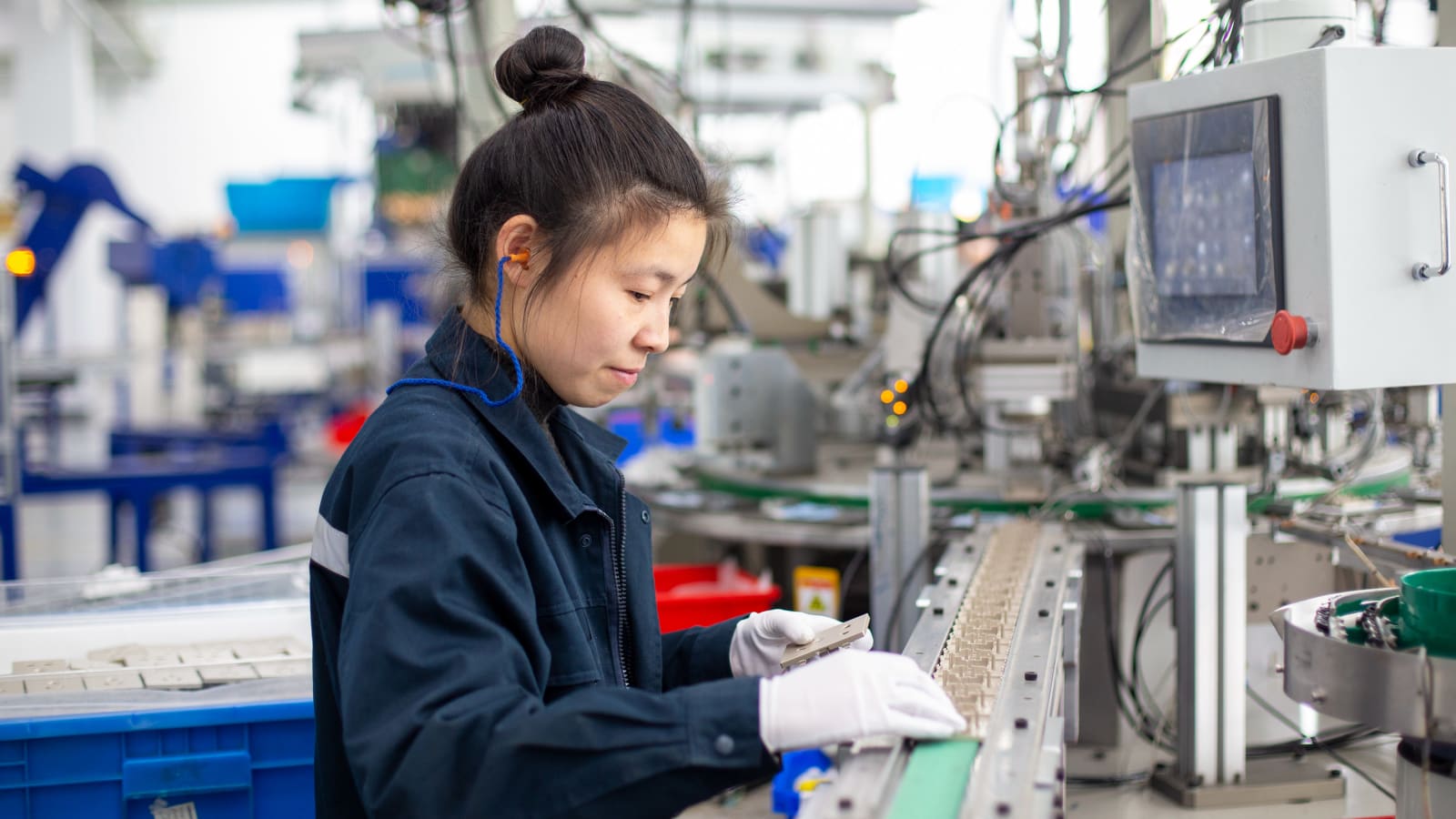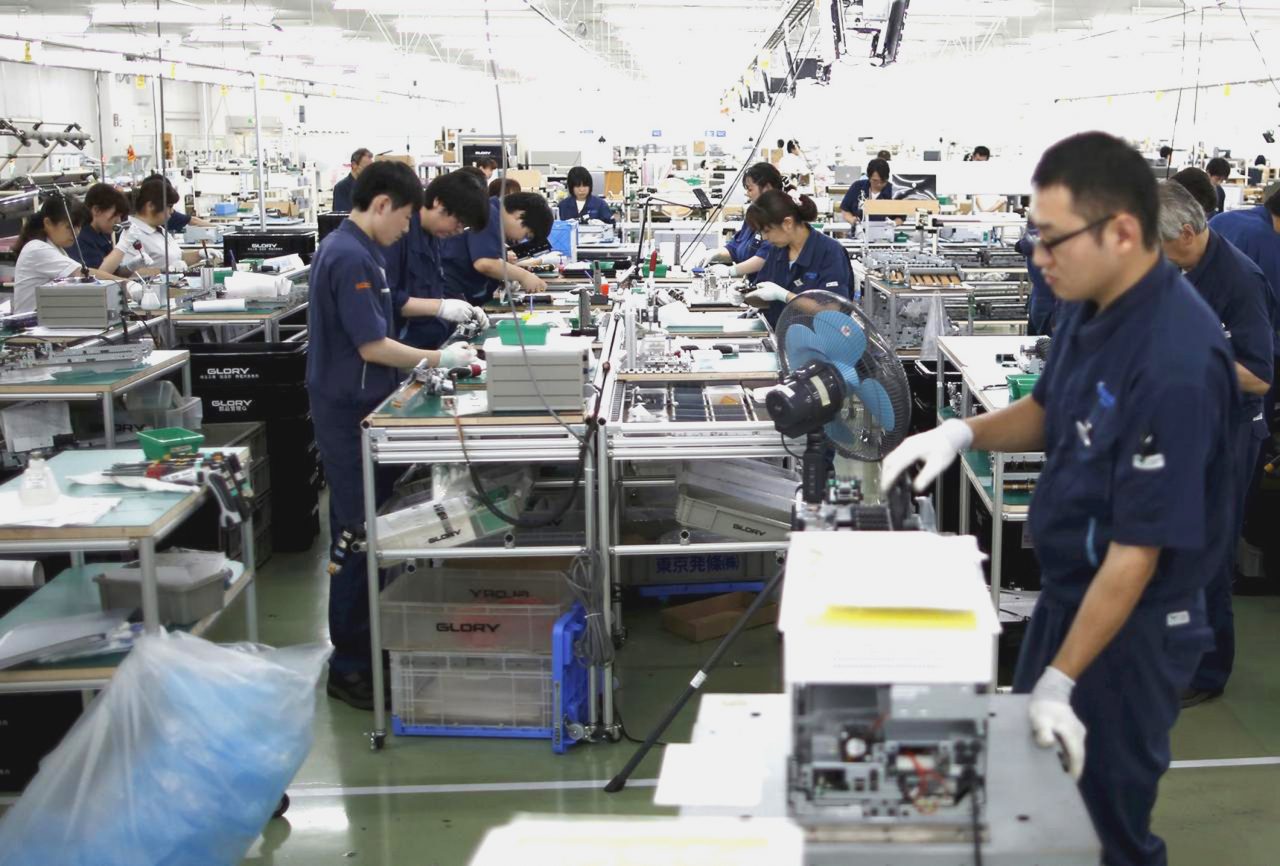Foreign direct investment (FDI) plays an important role in economies as it extends local economies the capital, skills, know-how, and innovation required to stay competitive in the global market. FDI that is channeled through global value chains offers even more potential in transforming developing economies into manufacturing-oriented centers. In this note, based on a policy brief on FDI and global value chains (GVCs) supported by the Hinrich Foundation, we focus on three economies – China, Indonesia, and Viet Nam – which exemplify the link between FDI inflows, participation of developing economies in GVCs, and the consequent economic upgrading that such participation in GVCs promotes.
FDI in the Asia-Pacific
The Asia-Pacific region has long been the world’s top destination for manufacturing-related FDI. From 1990 to 2020, FDI stock accumulated in the APEC region grew at an annual average rate of 10.4%. As of 2020, APEC economies accounted for nearly 52% of the global inward FDI stock.
Manufacturing tends to draw the bulk of FDI. As of 2019, the manufacturing sector received around half of all greenfield FDI projects globally – about US$400 billion. Outside of the petroleum sector, automotives and electronics occupy the largest shares – 15% of the greenfield manufacturing FDI projects flowed to the automotives sector and 13% was invested in electronics. Meanwhile, the textile sector makes up around 6% of all greenfield FDI projects and is a major source of employment in domestic economies.[1] In Viet Nam, the textile, leather, and garments industry contributed to nearly 50 per cent of all manufacturing employment.[2]
China, Indonesia, and Viet Nam each possess a manufacturing-oriented economic structure. And the FDI-propelled development of the manufacturing sector in each economy has led to regional production networks and stronger integration into GVCs. In particular, textiles, electronics, and automobiles observed different patterns of GVC participation and economic upgrading.
Indeed, our research reveals several insights. First, the size and domestic capacities of an economy may influence the level of GVC participation. Second, the positioning of each of the three economies in GVCs varies across different sectors. Third, FDI in the manufacturing sector is an important contributor to GVC participation and economic upgrading.
Download The FDI Network, Global Value Chain Participation and Economic Upgrading by Luna Ge Lai, Nguyen Thu Quynh and Akhmad Bayhaqi

First, let’s consider the size of the economy. Due to its size and self-sufficiency across numerous manufacturing sectors, China’s GVC participation rate is lower than that of most other economies. As its manufacturing profile is less comprehensive, Indonesia required more integration into global production networks to fully develop its manufacturing sector and strengthen its export performance. Finally, Viet Nam has the highest level of integration with global production networks. To a large extent, its high GVC participation rate aligns with its dependence on global sourcing demands.
The sector matters
Second, GVC positioning varies across different sectors. Generally, economies located in more upstream positions of GVCs (as measured by the distance to final demand) tend to capture greater shares of the value-added generated in GVCs than economies further downstream.[3] A greater value of the GVC position index entails that the economic sector is relatively more upstream.
Consider the textile sector, in which the GVC position indices are the lowest for all three economies. This suggests that all three economies are mostly hubs for final assembly, which involves activities of cutting, making, and trimming. Indeed, China and other developing economies in Southeast Asia have developed internationally competitive manufacturing capabilities by specializing in low-cost final assembly work. The sector’s leading firms are typically brand owners or retailers from developed economies.[4]
In the electronics sector, the dynamics of GVC positioning are very different. China’s positioning observed a mild increase over time, Indonesia’s remains largely unchanged, and Viet Nam’s has fallen steeply. Such opposite trends imply very different processes for GVC upgrading in each economy. While China has moved upstream along the value chain and Chinese firms have become lead firms in many domestic and global value chains for electronic goods, Indonesia has made slower progress.[5] Meanwhile, Viet Nam has over time emerged as an important electronics assembler.
Finally, in the automobile sector, all three economies witnessed a significant fall in their GVC positioning indices, indicating that all three economies have moved downstream along this GVC sector.
Overall, the evolving GVC positions demonstrate the economies’ varying paths in economic upgrading. The textile and electronics sectors saw more dynamic changes, while the automobile sector was more technology and capital intensive and consequently more path dependent. The average investment size of the automotive industry reaches US$58 million, while in electronics and textiles the values are US$45 million and US$16 million – respectively.[6]
Routes to upgrading
The experience of the textile sector offers important insights about FDI, GVC participation, and the potential for upgrading. The earlier development trajectories of most East Asian developing economies suggest that a simple route to industrialization is through textile manufacturing with policies initiated to encourage a more investment-friendly environment to attract multinationals. Vietnam’s Programme on the Development of Supporting Industry for 2016–2025 (Decision 68/2017) attempted to address the lack of competitive local suppliers by supporting and connecting domestic enterprises with foreign companies to further attract FDI in selected industries, including the textiles sector.[7]
Economic upgrading can also be achieved through the electronics sector, a dynamic industry in which parts and final goods are highly tradable. A handful of APEC economies have taken advantage of the opportunities made available through GVC participation to enhance their development processes and experiences. Initially, developing economies provided many incentives to attract multinationals into final assembly activities. In the 1990s, China’s surging inward FDI in electronics was largely concentrated in contract assembly and original equipment manufacturing (OEM) production.
As China’s economy moved up the value chain, the downstream segments of the production process relocated to neighboring economies with lower labor costs, such as Viet Nam. Economic upgrading thus went hand-in-hand with the development of the electronics sector as an industrialization engine.
More recently, the government of China has encouraged leading domestic ICT firms to invest overseas, with a view to acquiring new technologies and exploring new markets.[8] Up to the early 2000s, the now distinctive Chinese brands often began as suppliers or joint venture partners of companies from Hong Kong, China, or Chinese Taipei, providing the latter with capital, technology, and access to the market on the mainland.[9]
In comparison to these lighter industries, the automobile sector is more difficult to develop because its international competitiveness is dependent on technology and capital. Typically, the industry’s research and development (R&D), design, and engineering activities take place where the lead firms are headquartered, and final assembly plants are situated either within large domestic markets (e.g. Indonesia) or within reach of regional and global markets (e.g. Thailand).[10] Therefore, specialization in activities near the final stages of the production process helps developing economies establish closer links to GVCs. For the ASEAN region, Indonesia is one of the hubs for automobile GVCs, while Viet Nam specializes in completely knocked down (CKD) assembly and the manufacturing of certain parts and components.[11]
Finally, the majority of automotive suppliers in China rely heavily on the domestic market and do not have a dominant position in global OEM supply chains. China's automobile makers still rely on multinational suppliers for parts and components, as local suppliers lack the technological requirements to produce these parts and components in-house.[12]
The benefits of participation in global value chains through FDI are also supported by data on employment, productivity, and sales. Indonesian firms with at least 10 percent of foreign ownership performed significantly stronger in terms of annual sales and productivity growth. Further, compared to non-exporters and domestic firms, export-oriented Indonesian firms witnessed significantly higher growth in employment. In Viet Nam, firms that are more involved in exporting activities and have at least 10 percent of foreign ownership also enjoyed strong performance in sales and employment.
The majority of FDIs today are carried out by multinational enterprises (MNEs) in the form of mergers and acquisitions (M&As) and greenfield investments. When local firms act as suppliers and build strategic alliances with MNEs, increased interaction with the global giants may increase the likelihood of domestic firms becoming direct exporters in the future.[13]
To learn more about the criticality of FDI and GVCs for developing economies in pursuing export-oriented development strategies, read the APEC policy brief, supported by the Hinrich Foundation.
1. United Nations Conference on Trade and Development, “Statistical annex tables of the World Investment Report ” (UNCTAD, n.d.), https://worldinvestmentreport.unctad.org/annex-tables/
2. ASEAN Secretariat, “ASEAN Investment Report 2020-2021: Investing in Industry 4.0” (ASEAN Secretariat, 2021), http://investasean.asean.org/files/upload/ASEAN%20Investment%20Report%202020-2021.pdf
3. Cheng, Kevin C., Sidra Rehman, Dulani Seneviratne, Shiny Zhang, and Rachel van Elkan. "Reaping the Benefits from Global Value Chains." IMF Working Papers 15, no. 204 (2015). https://doi.org/10.5089/9781513516738.001; Wang, W., S. Thangavelu, and F. Lin. "Global value chains, firms, and wage inequality: Evidence from China." China Economic Review 66 (2021), 101585. doi:10.1016/j.chieco.2021.101585.
4. ASEAN-Japan Centre, “Global Value Chains in ASEAN – Paper 14: Textiles and Clothing” Paper and Database” (AJC, 2020), https://www.asean.or.jp/en/centre-wide-info/gvc_database_paper14/
5. United Nations Industrial Development Organization, “Global Value Chains and Industrial Development: Lessons from China, South-East and South Asia” (UNIDO, 2018), https://www.unido.org/sites/default/files/files/2018-06/EBOOK_GVC.pdf
6. United Nations Conference on Trade and Development, “World Investment Report” (UNCTAD, 2021), https://unctad.org/topic/investment/world-investment-report
7. ASEAN Secretariat, “ASEAN Investment Report 2020-2021.”
8. Qiang, Christine Z., Liu Yan, and Victor Steenbergen. "Foreign Direct Investment Can Help Global Value Chain Integration." World Bank Blogs. Last modified May 13, 2021. https://blogs.worldbank.org/psd/foreign-direct-investment-can-help-global-value-chain-integration.
9. UNIDO, “Global Value Chains and Industrial Development.”
10. ASEAN-Japan Centre, “Global Value Chains in ASEAN: Automobiles” (AJC, 2020), https://www.asean.or.jp/ja/wp-content/uploads/sites/2/GVC_Automobiles_Paper-12_January-24-2020-web-_edited.pdf
11. AJC, “Global Value Chains in ASEAN: Automobiles.”
12. Pawlicki, Peter, and Siqi Luo. "China’s cars and parts: development of an industry and strategic focus on Europe." In Chinese Investment in Europe: Corporate Strategies and Labour Relations, 41-59. Brussels: European Trade Union Institute, 2017. https://www.etui.org/sites/default/files/Chapter%202_5.pdf
13. Qiang, Yan, and Steenbergen, “Foreign Direct Investment Can Help Global Value Chain Integration.”
© The Hinrich Foundation. See our website Terms and conditions for our copyright and reprint policy. All statements of fact and the views, conclusions and recommendations expressed in this publication are the sole responsibility of the author(s).









